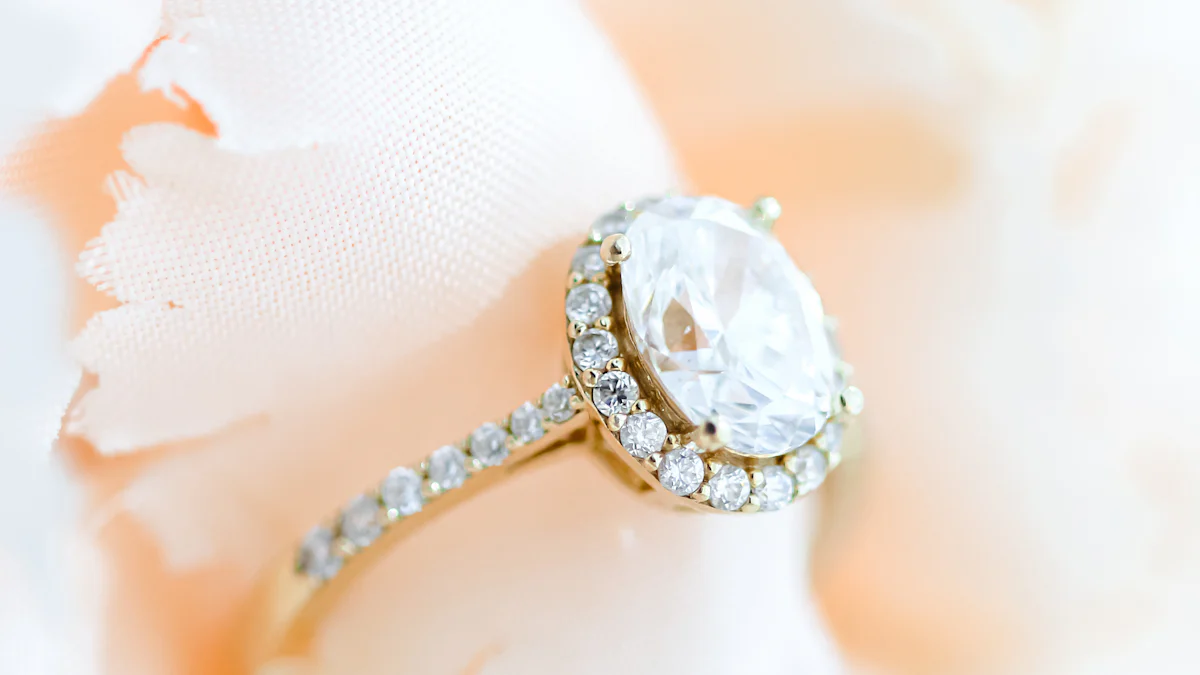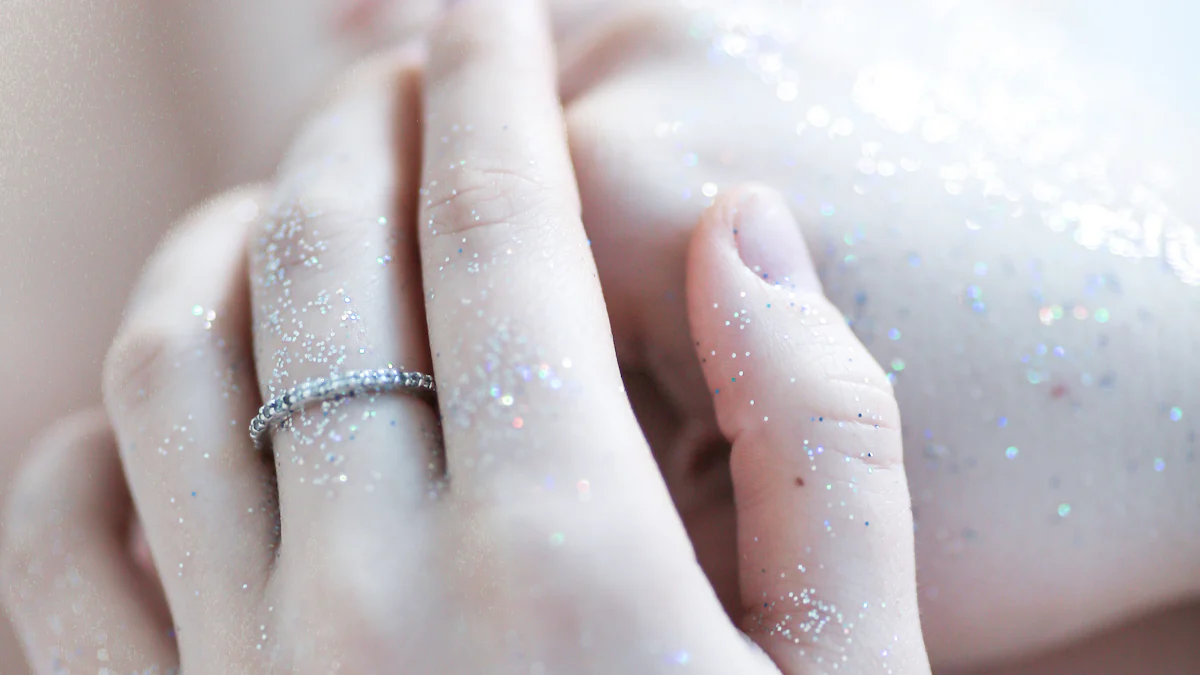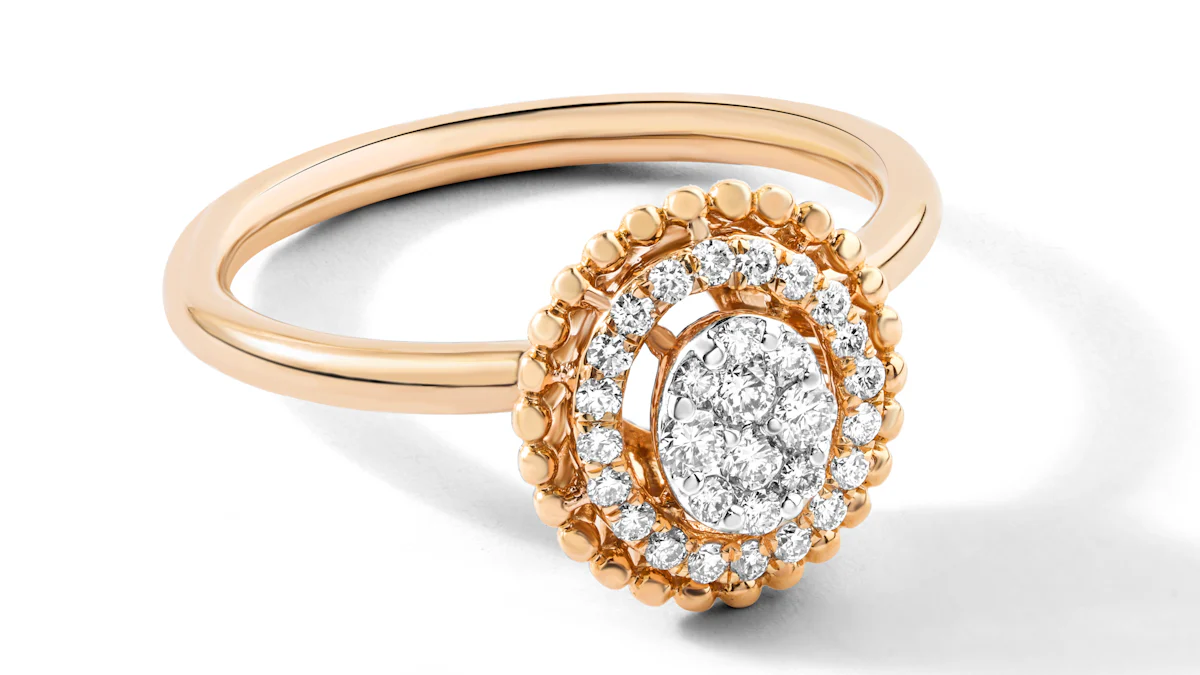Guide to the Perfect Carat Diamond Ring

Choosing the perfect carat diamond ring is a journey that reflects your unique style and values. You might wonder how to find the right balance between size, beauty, and budget. Personal preference plays a crucial role in this decision. Consider how the ring will fit into your lifestyle. Will it be a daily companion or reserved for special occasions? Remember, the 4 C's—cut, color, clarity, and carat weight—guide you in selecting a diamond that resonates with your heart and wallet. Embrace this exciting process, and let your intuition lead the way.
Key Takeaways
- Understand the 4 C's—cut, color, clarity, and carat weight—as they are essential in selecting a diamond that fits your style and budget.
- Consider your lifestyle when choosing carat size; a smaller diamond may be more practical for daily wear, while a larger one can be reserved for special occasions.
- Explore common carat sizes to find one that resonates with your personal style, whether you prefer subtle elegance or a bold statement.
- Maximize your budget by considering diamonds just under popular carat weights, which can offer a similar appearance at a lower cost.
- Choose a ring setting that complements your hand size and enhances the diamond's visual appeal, creating a harmonious look.
- Prioritize cut quality over carat weight; a well-cut diamond can appear larger and more brilliant, making it a more valuable choice.
- Embrace the emotional significance of your diamond; a smaller stone with a unique story can hold more value than a larger, impersonal gem.
Understanding Carat Weight

When you embark on the journey to find the perfect carat diamond ring, understanding carat weight becomes essential. This knowledge not only helps you make informed decisions but also ensures that the diamond you choose aligns with your personal style and budget.
What is Carat Weight?
Carat weight measures how much a diamond weighs. One carat equals 200 milligrams. This unit of measurement is crucial because it directly influences the diamond's price and size. While many people equate carat weight with size, it's important to remember that carat weight refers to weight, not dimensions. The cut, color, and clarity of the diamond also play significant roles in its overall appearance and value.
How Carat Weight Affects Size and Appearance
Carat weight significantly impacts the visual appeal of a diamond. A larger carat weight generally means a bigger diamond, which can make it more eye-catching. However, the diamond's cut and brilliance also contribute to its appearance. A well-cut diamond can appear larger and more brilliant than a poorly cut one of the same carat weight. Therefore, when selecting a diamond, consider how the carat weight interacts with the cut to enhance the stone's beauty.
Common Carat Sizes and Their Popularity
In the world of diamonds, certain carat sizes have gained popularity due to their balance of size and affordability. Common carat sizes include:
- 0.50 carats: Ideal for those seeking a subtle yet elegant look.
- 1.00 carat: A classic choice that offers a perfect blend of size and value.
- 1.50 carats: Provides a noticeable presence without being overwhelming.
- 2.00 carats and above: Often chosen for their impressive size and statement-making appeal.
Each size has its charm and appeal, allowing you to select a carat weight that resonates with your personal style and preferences. Remember, the best carat diamond ring is the one that feels right for you.
Personal Preferences and Lifestyle
Choosing a carat diamond ring is more than just a purchase; it's a reflection of your personal style and lifestyle. Your choice should resonate with who you are and how you live.
Matching Carat Size to Personal Style
Your personal style is an extension of your identity, influencing every choice you make, including jewelry. Some individuals gravitate towards smaller carat sizes, appreciating their understated elegance and sophistication. These diamonds exude charm without being overly flashy. Others might prefer a larger diamond to make a bold statement, showcasing their vibrant personality. Remember, the right carat size is the one that feels like an extension of you.
Considering Lifestyle and Daily Wear
Your lifestyle plays a crucial role in determining the ideal carat size. If you lead an active life, a smaller, more secure setting might suit you best, ensuring comfort and practicality. For those who reserve their diamond ring for special occasions, a larger carat size can add that extra sparkle and glamour. Consider how often you'll wear the ring and in what settings. This will guide you in choosing a carat size that complements your daily activities.
The Role of Sentimental Value
Sentimental value often outweighs size or cost when selecting a diamond. A smaller diamond with a unique story or family history can hold more meaning than a larger, more expensive stone. The emotional connection you have with your ring can enhance its beauty and significance. Whether it's a family heirloom or a symbol of a cherished memory, let your heart guide your choice.
Budget Considerations
Choosing the perfect carat diamond ring involves balancing your desires with your financial reality. You can find a beautiful diamond that fits your budget by understanding how carat size affects cost and learning strategies to maximize value.
Balancing Carat Size with Budget
When you start your search, consider how carat size impacts your budget. Larger diamonds often come with a higher price tag. However, you can find diamonds just under popular carat weights, such as 0.97 or 0.99 carats, which look similar to a full carat but cost less. This approach allows you to enjoy the appearance of a larger diamond without exceeding your budget.
Cost Implications of Different Carat Weights
The cost of a diamond increases significantly with carat weight. For example, a 0.95-carat diamond may be priced lower per carat than a 1-carat diamond, even though they appear quite similar. This price difference occurs because larger diamonds are rarer and more sought after. By choosing a slightly smaller diamond, you can achieve a similar look while saving money.
Tips for Maximizing Value
To get the most value from your purchase, focus on the diamond's cut quality. A well-cut diamond can enhance brilliance and make it appear larger than its actual carat weight. Additionally, consider the other 3 C's—color, clarity, and cut—when selecting your diamond. Sometimes, a diamond with a slightly lower carat weight but excellent cut and clarity can offer more visual appeal than a larger, less brilliant stone.
By understanding these factors, you can make informed decisions that align with your budget and personal style. Remember, the best carat diamond ring is one that brings joy and satisfaction without financial strain.
Hand and Ring Size Influence
How Hand Size Affects Perception of Carat Size
Your hand size plays a significant role in how a diamond appears. Larger hands can beautifully showcase bigger stones, while petite hands might find large diamonds overwhelming. This balance is crucial for achieving a harmonious look. When selecting a carat size, consider how it complements your hand's proportions. A well-chosen diamond enhances your natural beauty and creates a stunning visual impact.
Choosing the Right Ring Setting for Your Hand
The ring setting you choose can dramatically influence how your diamond looks on your hand. Certain settings can enhance the diamond's appearance, making it seem larger or more prominent. For instance, a halo setting surrounds the center stone with smaller diamonds, adding sparkle and creating the illusion of a larger diamond. If you have slender fingers, a delicate band can accentuate the diamond without overpowering your hand. Conversely, a wider band might suit those with larger hands, providing balance and proportion. Explore different settings to find one that complements your hand and highlights your diamond's beauty.
Optical Illusions Created by Different Settings
Different ring settings can create optical illusions that affect how your diamond is perceived. A bezel setting, which encircles the diamond with a metal rim, can make the stone appear larger and more substantial. Prong settings, on the other hand, elevate the diamond, allowing more light to pass through and enhancing its brilliance. These settings can make a smaller carat diamond appear more impressive. By understanding these effects, you can choose a setting that maximizes your diamond's visual appeal, ensuring it shines brightly on your hand.
"The right setting can transform a diamond, enhancing its beauty and making it a true reflection of your style."
The Importance of the Other 3 C's
When selecting a diamond, you might focus on carat weight, but the other 3 C's—cut, clarity, and color—play equally vital roles in determining a diamond's beauty and value. Understanding these elements will help you make an informed choice that aligns with your desires and budget.
How Cut Affects the Appearance of Carat Size
The cut of a diamond significantly influences its brilliance and perceived size. A well-cut diamond reflects light beautifully, creating a dazzling sparkle that can make it appear larger than its actual carat weight. When a diamond is cut to ideal proportions, light enters through the top and reflects back, maximizing its brilliance. This effect enhances the diamond's visual appeal, making it a standout piece in any setting. Prioritize cut quality to ensure your diamond shines brightly and captures attention.
The Role of Clarity in Enhancing Diamond Beauty
Clarity refers to the presence of internal or external imperfections, known as inclusions and blemishes. These characteristics can affect a diamond's appearance and value. GCAL Gemologists, experts in diamond grading, explain that clarity is assessed by examining the diamond under a microscope to identify these features. A diamond with fewer inclusions allows more light to pass through, enhancing its brilliance and beauty. When choosing a diamond, consider clarity as a key factor in achieving a stunning and flawless look.
"A gemologist must assess the number, size, type, position, and relief of each inclusion." - GCAL Gemologists
Understanding the Impact of Color on Diamond Value
Color grading in diamonds ranges from D (colorless) to Z (light yellow or brown). The less color a diamond has, the higher its value and rarity. GCAL Gemologists note that diamonds are examined in a standard lighting environment and compared to Precision Master Color diamonds to determine their grade. While the differences between color grades are subtle, they can significantly impact a diamond's appearance and price. Opt for a diamond with a color grade that complements your style and enhances the stone's natural beauty.
"Diamonds are color graded on a scale from D to Z. Each letter represents a slightly more saturated color." - GCAL Gemologists
By understanding the importance of cut, clarity, and color, you can select a diamond that not only meets your expectations but also becomes a cherished symbol of elegance and sophistication. Let these insights guide you in finding a diamond that truly reflects your unique style and personality.
Pros and Cons of Various Carat Weights

Choosing the right carat weight for your diamond ring involves weighing the advantages and disadvantages of different sizes. Each carat weight offers unique benefits and challenges, influencing the overall appearance and practicality of your diamond.
Advantages of Larger Carat Diamonds
Larger carat diamonds often captivate with their impressive size and presence. They make a bold statement and can be a symbol of luxury and success. When you choose a larger diamond, you enjoy:
- Visual Impact: A larger diamond naturally draws attention and can serve as a stunning centerpiece in any setting.
- Symbolic Value: For many, a larger diamond represents significant milestones or achievements, adding sentimental value.
- Investment Potential: Larger diamonds are rarer and can hold their value well over time, making them a potential investment.
However, it's essential to consider how a larger diamond fits into your lifestyle. While they are eye-catching, they might not be practical for everyday wear. Balancing carat weight with other diamond characteristics like cut, clarity, and color ensures you select a diamond that is both beautiful and functional.
Benefits of Smaller Carat Diamonds
Smaller carat diamonds offer their own set of advantages, often appealing to those who appreciate subtle elegance and practicality. When you opt for a smaller diamond, you benefit from:
- Affordability: Smaller diamonds are generally more budget-friendly, allowing you to allocate resources to other important aspects of the diamond, such as cut and clarity.
- Versatility: A smaller diamond can be more versatile, easily complementing various styles and settings without overwhelming your hand.
- Comfort: For daily wear, a smaller diamond can provide comfort and ease, especially if you lead an active lifestyle.
A well-cut smaller diamond can maximize its sparkle and brilliance, making it visually stunning regardless of its carat weight. Prioritizing quality over size can result in a more brilliant and valuable diamond.
Finding the Perfect Balance
The key to selecting the ideal carat weight lies in finding a balance that aligns with your personal preferences, lifestyle, and budget. Consider these factors:
- Lifestyle Compatibility: Choose a carat weight that suits your daily activities and comfort level. A diamond should enhance your life, not hinder it.
- Quality Over Quantity: Focus on all characteristics of the diamond, not just carat size. A superior cut can enhance brilliance, making a slightly smaller diamond appear more impressive.
- Personal Expression: Your diamond should reflect your unique style and values. Whether you prefer a larger statement piece or a smaller, elegant gem, let your heart guide your choice.
Ultimately, the perfect carat diamond ring is one that resonates with you, offering a harmonious blend of beauty, practicality, and personal significance.
Choosing the perfect carat diamond ring involves balancing several key factors. Remember to consider your personal style, lifestyle, and budget. Whether you lean towards the subtle elegance of a smaller diamond or the bold presence of a larger stone, let your heart guide you. Jewelers emphasize that it's not just about weight but how it complements the diamond’s cut, color, and clarity. Trust your instincts and explore different options within your budget. This journey is about finding a diamond that resonates with you, offering beauty and significance in every glance.
FAQ
What is carat for diamond?
Carat weight in diamonds is akin to the way we value gold. It measures how much a diamond weighs, with one carat equaling 200 milligrams. While many people think of carat weight as size, it's more about finding the right balance between size, beauty, and rarity. A diamond's carat weight significantly influences its value, but it's not the only factor to consider.
Which carat of diamond is best?
The "best" carat weight for a diamond depends on your personal preferences and budget. There's no universal answer, as the ideal carat size varies based on individual taste, the style of the setting, and financial considerations. Consider what feels right for you and aligns with your lifestyle and aesthetic.
How does carat weight affect diamond price?
Carat weight plays a pivotal role in determining a diamond's price. Generally, larger diamonds are rarer and more desirable, which drives up their cost. For example, a one-carat diamond can be significantly more expensive than a half-carat diamond of the same quality. As carat weight increases, so does the price, often exponentially.
How do I choose the right carat size for my diamond?
Choosing the right carat size involves blending practical considerations with your personal style. Whether you're shopping for an engagement ring or a special piece of jewelry, the carat weight will impact both appearance and price. Consider how the diamond will fit into your lifestyle and what feels comfortable for daily wear.
Why is carat weight often the first thing people consider?
When discussing diamonds, carat weight frequently comes to mind because it directly correlates with size and value. It's a term often used in conversations about diamond quality and price. However, while carat weight is important, it's essential to consider the other 3 C's—cut, color, and clarity—to ensure a well-rounded choice.
How can I balance carat size with my budget?
Balancing carat size with your budget requires careful consideration. Larger diamonds tend to be more expensive due to their rarity. To find a ring that meets both size and budget criteria, consider diamonds just under popular carat weights, like 0.97 or 0.99 carats. These can offer a similar appearance to a full carat but at a lower cost.
Does a larger carat always mean a better diamond?
Not necessarily. While larger diamonds make a bold statement, they might not be practical for everyday wear. The best diamond is one that suits your lifestyle and personal style. A smaller diamond with excellent cut, clarity, and color can be more visually appealing than a larger, less brilliant stone.
Can a smaller carat diamond still be valuable?
Absolutely. Smaller carat diamonds offer affordability, versatility, and comfort. They can be more budget-friendly, allowing you to focus on other aspects like cut and clarity. A well-cut smaller diamond can maximize its sparkle and brilliance, making it stunning regardless of its carat weight.
How does hand size influence carat choice?
Your hand size affects how a diamond appears. Larger hands can showcase bigger stones beautifully, while petite hands might find large diamonds overwhelming. Consider how the carat size complements your hand's proportions to achieve a harmonious look.
What should I prioritize when selecting a diamond?
Prioritize a balance of the 4 C's—carat, cut, color, and clarity. While carat weight is important, a superior cut enhances brilliance, making a slightly smaller diamond appear more impressive. Choose a diamond that reflects your unique style and values, ensuring it brings joy and satisfaction.
See Also
Your Ultimate Resource for Choosing the Ideal Ruby Ring
Tips for Finding the Ideal Women's Diamond Ring
Selecting the Perfect Rectangular Engagement Ring Made Easy

